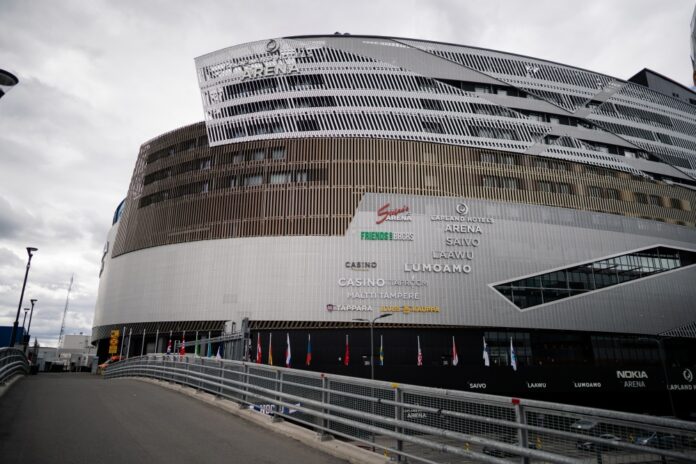At the Nokia arena in Finland, carrier aggregation helped optimise spectrum in different frequency bands
Elisa, Nokia and Qualcomm Technologies said have hit what they claim is a record-breaking 5G uplink speed of 2.1 Gbps during a live demonstration at the Nokia Arena in Tampere, Finland. The Nokia Arena is one of the first stadia equipped with 5G mmWave.
The new record follows the 8Gbps downlink speeds announced in 2020. They expect the solution to be fully deployed next year and say will enable Elisa to offer services that enhance visitors’ time at the venue: uplink capabilities are important for new edge applications like broadcasting or high-definition streaming.
During the trial, Nokia provided its AirScale base station in 26GHz mmWave spectrum over Elisa’s commercial 5G network. The network was connected to a 5G device powered by a Snapdragon X65 5G Modem-RF System featuring fourth-generation Qualcomm QTM545 mmWave antenna modules.
Nokia also deployed its Carrier Aggregation technology to make the best use of the available spectrum. The Carrier Aggregation setup included four component carriers of 100MHz each.
New services
Once deployed, the service will create new opportunities for data services at the venue, such as real-time multi-user 8K ultra-high-definition video streaming, and augmented reality content for smartphones or wearable devices for immersive experiences.
Visitors to the Arena will also be able to watch live performances from 360º camera locations via VR headsets from the comfort of their seats.
Broadcasters can use enhanced video capture to support ultra-high quality live reporting and content delivered to mobile devices and Tvs. At the same time, 5G technology will support optimizing venue operations and critical functions such as security.
Enrico Salvatori, Senior Vice President, Qualcomm Europe, Inc., and President, Qualcomm Europe/MEA, said: “We are incredibly proud of this accomplishment which represents a significant milestone for 5G mmWave. The throughputs achieved today show the true potential for mmWave deployments and we are excited to continue collaborating with industry leaders to make 5G mmWave a commercial reality.”



